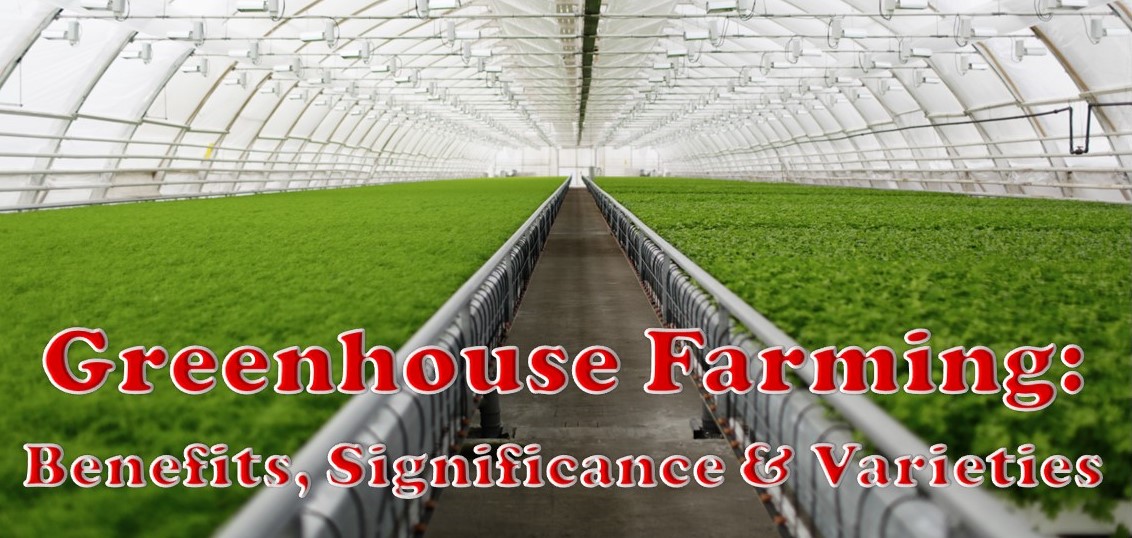Agriculture, a cornerstone of livelihood for millions and the bedrock of India’s sustenance for millennia, is standing at the threshold of transformation. The confluence of climate change and escalating food demand has ushered in the need for innovative farming methodologies. In response, a new wave of ecological practices, spearheaded by greenhouse farming, is redefining India’s agricultural landscape. In this blog, we embark on a journey to unravel the captivating world of greenhouse farming in India—a sustainable and revolutionary approach poised to revolutionize the very essence of agriculture.
Greenhouse Farming: A Paradigm Shift
Greenhouse farming, often referred to as polyhouse farming, stands as a revolutionary approach that has garnered remarkable prominence within India’s agricultural tapestry. Its emergence heralds a departure from conventional farming techniques, infusing cutting-edge technology with an eco-conscious outlook. This synergy paves the way for sustainable food production, poised to address the challenges posed by the ever-growing demands on our agricultural systems.
Evolving Agricultural Practices: The Rise of Greenhouse Farming
Within the context of India, where agriculture is the lifeblood of the economy and the livelihoods of countless individuals, the advent of greenhouse farming has brought forth a sea of change. By creating controlled environments shielded from the capricious vagaries of weather and the onslaught of pests, this agricultural paradigm shift has reimagined the manner in which we cultivate crops.
Unveiling the Essence of Greenhouse Farming
Definition and Process: Greenhouse farming, also known as polyhouse farming, is an advanced agricultural practice that involves cultivating crops within a controlled environment housed in a structure crafted from glass or plastic. This protective enclosure acts as a shield against external climatic fluctuations and pests, while still permitting the nourishing touch of sunlight.
Significance and Benefits:
- Year-round Cultivation: The practice facilitates year-round cultivation, offering a departure from the constraints of traditional seasons. This reduction in dependency on seasonal changes can bolster agricultural stability and yield.
- Climate Resilience: Shielded within the confines of the greenhouse, crops are safeguarded from extreme weather events such as storms, excessive rains, or harsh winds. This fosters stability and reliability in yield.
- Bridging Regional Disparities: Greenhouse farming enables the cultivation of crops that might not be native to a region due to climatic constraints. For instance, crops suited for warmer climates can be grown in colder regions, thereby expanding the agricultural horizons.
Greenhouse Technology Revolution in India
India has embraced modern greenhouse technology to amplify agricultural productivity. Cutting-edge techniques encompassing climate control systems, hydroponics, and automated irrigation systems contribute to creating an environment conducive to optimal crop growth.
Unlocking the Benefits of Greenhouse Farming
The advantages of greenhouse farming are manifold. Elevated crop yield, efficient water utilization, reduced reliance on chemicals, and minimized land usage stand as testament to its sustainability. Moreover, as a protective shield against the wrath of natural disasters, greenhouse farming serves as a solution to climate-vulnerable regions.
Commercial Greenhouse Farming: A Lucrative Pursuit
The commercial greenhouse market in India is experiencing an exponential surge. With an increasing demand for fresh produce year-round, greenhouse farming has emerged as a profitable avenue for entrepreneurs and investors.
Embarking on the Greenhouse Journey: For Beginners
While greenhouse agriculture might appear daunting for beginners, its rewards are as remarkable as the challenges it presents. The ability to cater to demands for exotic produce previously unavailable can translate to enhanced profitability. Grasping the fundamentals of greenhouse technology, crop selection, and monitoring systems is essential for success in this realm.
Navigating Costs and Subsidies in Greenhouse Farming
Though the initial investment in greenhouse farming can be substantial, various government schemes offer subsidies to promote this eco-friendly and efficient method. Familiarity with available subsidies, such as the “Greenhouse Farming Subsidy” program, is pivotal for prudent financial planning.
Varieties of Greenhouse Farming Crops
Greenhouses accommodate a diverse range of crops, spanning from vegetables like tomatoes, cucumbers, and peppers to flowers such as roses and carnations. Understanding the specific requirements of each crop is fundamental to successful greenhouse cultivation.
Profit Potential of Greenhouse Farming in India
When managed adeptly, greenhouse farming can yield substantial profits. The capacity to command premium prices for off-season produce and the potential for exports make it an enticing option for farmers. Thus, identifying profitable greenhouse crops is pivotal for unlocking the full economic potential of this innovative agricultural practice in India.
Optimal Crops for Indian Greenhouse Farming
Certain crops align exceptionally well with greenhouse cultivation in India. Exotic vegetables, herbs, and high-value flowers are in consistent demand within domestic and international markets.
Embracing Sustainability: Organic Greenhouse Farming
As awareness about sustainable agriculture grows, the allure of organic greenhouse farming is on the ascent. This approach guarantees chemical-free produce, catering to the rising preference for organic products.
Scaling Up: Large-Scale Greenhouse Farming
Large-scale greenhouse farming involves extensive crop cultivation within vast enclosed spaces. This approach aligns with commercial requirements and plays a pivotal role in fulfilling the nation’s food demands. Government subsidies and training initiatives empower individuals to equip themselves with both knowledge and financial capacity, ensuring they can meet large-scale demand and foster unprecedented business growth.
Greenhouse Farming vs. Conventional Farming
In comparison to traditional open-field farming, polyhouse farming offers enhanced crop control and protection, elevated yields, and reduced water consumption. However, it necessitates higher initial investment and technical expertise.
In Conclusion
Greenhouse farming stands as a transformative force, altering the landscape of crop cultivation and bolstering food security in India’s agricultural domain. Government support for contemporary, sustainable farming methodologies underscores the potential for agriculture to thrive in India’s future. This technology lays the foundation for a robust and vibrant farming ecosystem, one that benefits farmers, consumers, and the environment alike. The narrative of Indian agriculture is evolving, driven by innovation, sustainability, and the promise of a more secure tomorrow.

